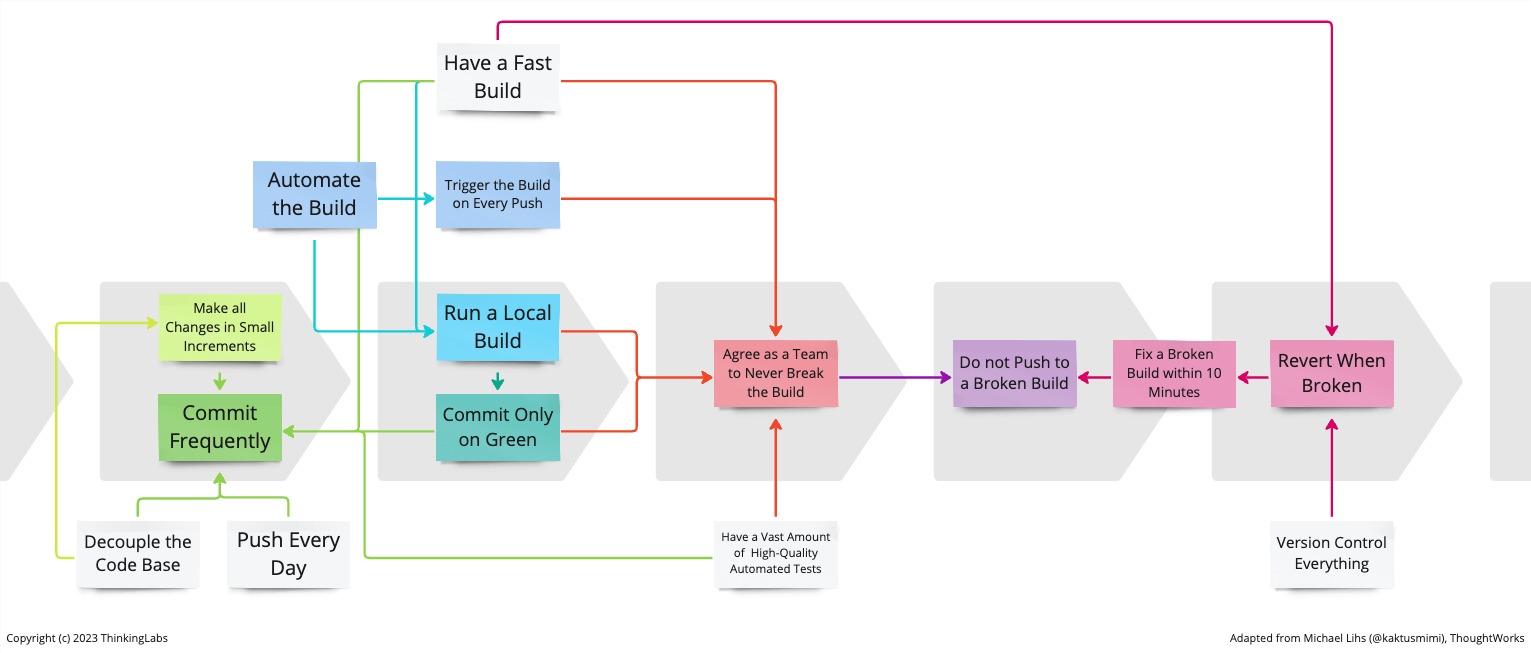One precondition of being in a state of Continuous Integration is to fix a broken build within ten minutes. As long as the build is broken, the team cannot perform on-demand production releases. This irrevocably incapacitates the organisation to make money.
A team is said to be in a state of Continuous Integration when:
- Everyone in the team (or every pair) commits at least once a day to mainline, leading to multiple integrations per day for the whole team.
- Every commit to mainline triggers an automated build and execution of all automated tests.
- Whenever the build fails, the team can fix it within 10 mins.

Without any doubt Agree as a Team to Never Break the Build is the undisputable, non-negotiable, number one practice to implement to realise Continuous Integration successfully. We all agree about that. Though, some do not.
Nevertheless, that does not mean the build cannot break on any occasion. Some say this practice puts too much pressure on teams, especially on juniors. As a senior, we have to be conscious of our privileges. It is, therefore, crucial to reassure more junior engineers that builds will break. Because life happens, for reasons out of our control, and that is absolutely fine.
Some teams prefer to use Pull Requests with auto-merges once the build passes to Mainline pristine at all times. Even so, successful teams rarely have a red Mainline. When they do, they learn and improve.
If a team only has green builds, it is a sign the team does not improve any more.
(or something along this line … I don’t remember the exact words, right away)
However, we must have a process that allows us to quickly repair the build and swiftly return to a green situation. As long as the build is broken, it disables the team’s ability to perform on-demand production releases. The longer the build is broken, the vaster the cost of delay and opportunity costs, and the greater the time to market. Together with blocking a whole team with non-negligible salaries, these are fairly impressive incurred costs. All things considered, this stops the organisation to make money.
Hence, whenever the build fails the team stops the line, Does not Push to a Broken Build, stops all work, owns the failure and fixes the build with the highest priority. Only once the build is fixed, the team can pick up on-going work again and move on.
When the build is broken, we lose the code-base health monitoring. That impairs Continuous Integration. Adding new code on top of a broken build aggravates the situation. It adds new problems on top of already existing problems. New builds are triggered, making the problem analysis even harder to find the root causes. Because of that, the team is further held away from attaining Continuous Integration.
Without Continuous Integration our application is broken until someone else proves it works. Consequently, it delays delivery.
Therefore, it is imperative to Agree As a Team To Never Break The Build while being mindful builds will occasionally break. That is an opportunity for the team to learn.
But why fixing in 10 minutes? Why not five minutes or 15 minutes? This relates to Have a Fast Build. If the build is under ten minutes, quickly fixing the problem and re-running the build will work if the fix is easy. On the other hand, if the fix is difficult and time-consuming, the easiest and fastest way to fix the build is to Revert When Broken. Revert the failing commit and go back to the last known good state. Surely, this necessitates to Version Control Everything.
Research indicates that trunk-based development together with Continuous Integration are statistically significant predictors of the adoption of Continuous Delivery. In turn, Continuous Delivery predicts higher IT delivery performance. Together with the adoption of Lean Product Management and a generative organisation culture, they predict higher organisation performance. As a result, to keep the organisation financially healthy, we should fix broken builds as soon as possible, preferably within 10 minutes.
Bibliography
- Continuous Integration, Martin Fowler
- Continuous Integration Certification, Martin Fowler
- Accelerate, Dr. Nicole Forsgren, Jez Humble and Gene Kim
The Series
The Practices That Make Continuous Integration series:
- Team working for Continuous Integration
- Coding for Continuous Integration
- Building for Continuous Integration
- Make the Build Self-Testing
- Push Every Day
- Trigger the Build on Every Push
- Fix a Broken Build within 10 Minutes
- Have Reliable Tests
- Broadcast the Codebase’s Health
Definitions
Mainline
The Mainline is the line of development in Version Control which is the reference from which system builds are created that feed into a deployment pipeline.
For CVS and SubVersion, this is trunk. For Git, this is the remote main branch. For Mercurial, this is the remote default branch.